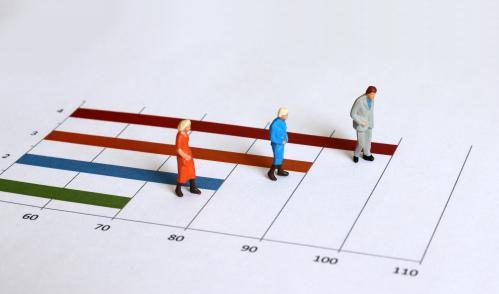Many ideas have been floated for the incoming Administration’s stimulus package – from wiring schools to carryback tax breaks for business and now even “shovel-ready” projects for the nation’s zoos. One area has received comparatively little attention, though it should: The nation’s worker training system.
In a recession, worker training can serve two crucial functions. First, it can help equip unemployed and underemployed workers to find good jobs when the economy begins to recover. Second, it can reduce the number of jobless workers who are looking for work. By giving the unemployed a useful way to spend their time outside of a Job Service office, worker retraining can shrink the queue of unemployed. People who are devoting most their time to upgrading their skills in a college classroom or training center will not be competing with newly laid off workers for job openings.
Despite what one might think, the U.S. Department of Labor is not the main source of public funds for worker training and retraining. DOL’s total spending on that function is considerably less than $6 billion a year — substantially less than what is needed to train millions of newly laid-off workers. The two biggest sources of public funds for worker training are federal grants and subsidized loans for post-secondary education and training (financed through the U.S. Department of Education) and state and local grants to post-secondary institutions, such as state universities and community colleges. Many of the ultimate beneficiaries of this spending are older than the traditional college-going ages — 18 to 22. In fact, more than a third of the students enrolled in the nation’s colleges and universities – – 6.4 million adults – – are over age 24. Most of these older students are adults who were once in the workforce but then decided to go back to school to improve their credentials.
Careful research shows that the demand for enrollment in post-secondary institutions, especially in community colleges, tends to be economically counter-cyclical. A soaring unemployment rate drives up the demand for college admission. If it is hard to find a good-paying job, it certainly makes sense to improve one’s credentials so it will be easier to get a good job in the next economic recovery. Unfortunately, neither the federal portion of the funding stream (through the U.S. Department of Education) nor the state and local funding stream (through grants to community and public four-year colleges) automatically increases in a recession. In fact, the state and local funding stream is strongly cyclical: It tends to decline in a recession.
Economists Peter Orszag and Tom Kane, among others, have found that state funding for post-secondary education is highly vulnerable to cutbacks in a weak economy. Governors and state lawmakers face shrinking revenues, and they tend to focus on protecting state programs for the needy and unemployed, for the criminal justice system, and for K-12 education. State spending on post-secondary education often shrinks in the face of lower state revenues and increased demands for essential state services. In past recessions, the federal government has not offset those cuts. The net result is that the number of education and training slots can decline even as the demand for them rises.
Part of any federal countercyclical stimulus package should be devoted to protecting public college, university, and community college classroom enrollments in the midst of this downturn. There are two ways to do this. A good federal stimulus package would include two kinds of spending: (1) More generous grants and loans for students (indirectly helping both public and private institutions); and (2) Direct grants to publicly supported colleges. The latter form of aid should be more generous for institutions located in states that have experienced the biggest increases in unemployment. To discourage states from using the temporary federal aid to reduce their own funding for post-secondary schooling, the federal aid package should explicitly reward institutions that maintain or increase the number of enrolled students and new graduates. Institutions that curtail admissions or enrollments should receive less help or perhaps no assistance at all. The goal of the aid package is to increase the number of unemployed and under-employed adults who are engaged in improving their job skills. The primary goal is not to provide general fiscal relief to the states, a goal that can be achieved through other kinds of countercyclical aid.
A recession is a good time for jobless Americans to improve learn new skills. Unfortunately, the dire financial position of state governments will lead many of them to cut funding to the institutions that provide credentials and skills — public colleges and universities. One sensible goal of a stimulus package is to boost the quantity and quality of classroom openings available to unemployed workers who want to improve their workplace skills.



Commentary
Op-edThe Stimulus Package Should Help Workers Get Retrained
January 8, 2009